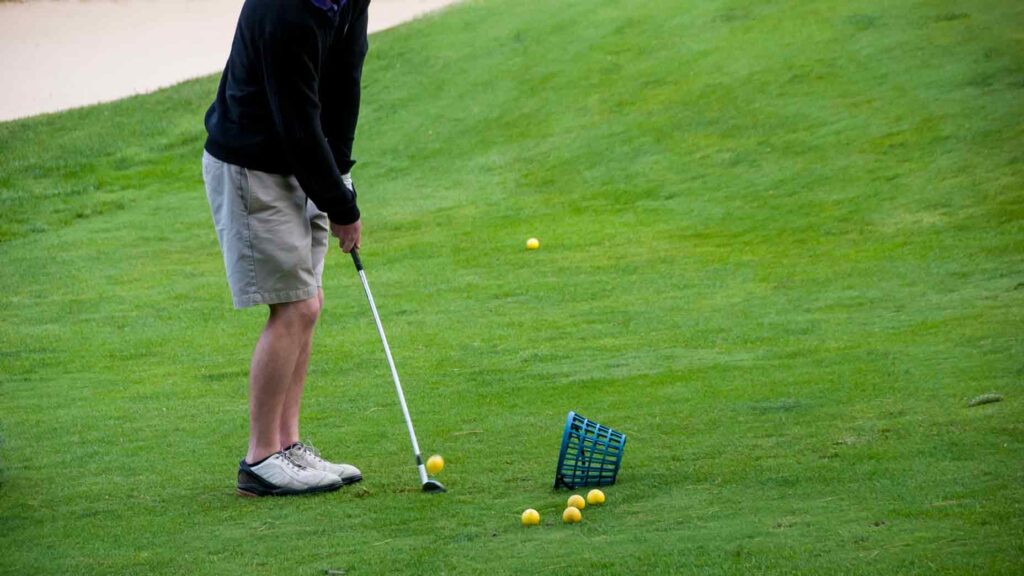Mastering Your Short Game: How to Lower Your Golf Scores
In the game of golf, precision and skill are paramount, but even the top players on the PGA Tour struggle to hit every green in regulation (GIR). The stats from 2025 show that the average GIR percentage lingered just below 66%, which means even the elite golfers find themselves navigating tricky situations around the greens about a third of the time. This reality underscores the importance of developing a robust short game. Embracing the unpredictable nature of golf is essential; it’s not just about hitting greens, but also about mastering recovery techniques that can save your scorecard.
One common pitfall for golfers—especially recreational players—is missing the green in regulation. Yet, this blunder can be mitigated through solid short-game skills. Having the ability to get up-and-down consistently after missing a green can significantly reduce the negative impact on your overall score. The essence of golf is not perfection but the art of recovery, making short-game proficiency critical for all skill levels.
To elevate your short game, it’s crucial to focus on the fundamentals. Parker McLachlin, a renowned golf instructor known as the "Short Game Chef," recently shared insightful tips that can help golfers refine their approach to short-game shots. One of the primary lessons he emphasizes is the importance of the takeaway in your swing, particularly for chipping and pitching techniques that are vital around the greens.
When it comes to executing short-game shots effectively, McLachlin categorizes techniques into two families: those that resemble the putting stroke and those requiring more wrist movement, like flop shots and bunker escapes. For the majority of scenarios faced near the greens, mastering pitches and chips—akin to a putting stroke—is generally sufficient. This requires a focus on smooth shoulder rocking rather than wrist manipulation, which can lead to inconsistencies.
Many recreational golfers struggle with maintaining "quiet wrists" during short-game shots, as they are accustomed to using their wrists more actively in full swings. This is where McLachlin’s teaching comes in handy, particularly his advice on managing the takeaway to keep your wrists stable. He advocates for a "low and wide" takeaway, highlighting that this method can minimize issues like digging the club into the ground or chunking shots.
To achieve this desired low and wide takeaway, golfers should aim to start their backswing in a way that feels grounded and expansive. McLachlin emphasizes that the way you take the club back largely determines how you’ll deliver it at impact. By focusing on this takeaway technique, golfers can enhance their control and execution of short-game shots, ultimately leading to a more reliable short game all around.
Moreover, practicing these fundamentals not only aids in individual skill improvement but also builds confidence. When golfers find themselves adept at getting up-and-down, the pressure associated with missing a green significantly diminishes. With lower stress levels comes the opportunity to focus on strategy and decision-making, allowing players to navigate challenging lies and positions more intuitively.
Utilizing visual aids, such as instructional videos, can also augment your learning process. Observing McLachlin’s techniques in action provides an additional layer of understanding that complements hands-on practice. Integrating visual learning with physical drills can solidify these concepts, making them second nature when faced with high-pressure short-game situations.
Ultimately, the journey to mastering your short game is an ongoing process, filled with opportunities for growth and refinement. By embracing the reality that even the best occasionally miss greens and focusing on improving key aspects of your short game, you’ll find that you can elevate your overall performance. With commitment and practice, getting up-and-down will become a more routine part of your game, leading to lower scores and greater enjoyment on the course.
In conclusion, while achieving every green in regulation might be an unrealistic goal given the nature of golf, honing your short game through effective takeaway techniques and practice strategies is an attainable objective. By adopting insights from experts like Parker McLachlin, golfers can transform setbacks into opportunities for success, enhancing their overall experience and performance on the course. Focus on the short game, and watch as it revolutionizes your approach to golf.


